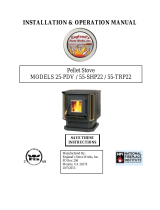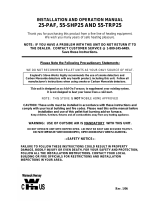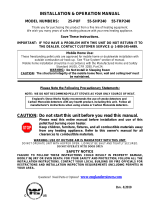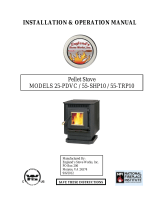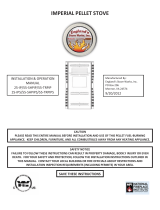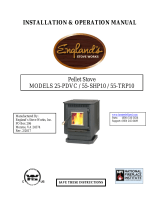
Page | 3
TABLE OF CONTENTS
Introduction
• Introduction...................................4
Specifications
• Heating Specifications..................5
• Dimensions ...................................5
• EPA Compliance...........................5
Installation
• Installation Overview....................6
• Clearances to Combustibles..........7
• Venting Introduction.....................8
• Venting Guidelines .......................8
• Additional Venting Information ...9
• Approved Venting Methods
o Through the Wall............10
o Through the Ceiling........11
o Existing Chimney............12
• Mobile Home Installation...........13
• Outside Air Hook-Up..................14
• Floor Protection ..........................15
Daily Operation
• Getting Started............................16
• Lighting a Fire.......................16-17
• Control Board Settings................18
• Error Codes.................................19
• Power Failure..............................20
• Thermostat Installation...............21
• Thermostat Operation.................22
Maintenance
• Daily
o Important Notes ..............23
o Daily Ash Removal.........24
o Cleaning the Burnpot......25
• Bi-Weekly
o Important Notes ..............26
o Baffle Removal...............27
o Tube Cleaning.................27
• Monthly
o Important Notes ..............28
o Exhaust Chamber............29
o Venting Pipe....................30
• Yearly
o Important Notes ..............31
o Exhaust Blower.........32-33
o Convection Blower .........34
o Hopper Fines...................34
o Checking Gaskets............35
Troubleshooting Guide
• Troubleshooting....................36-37
Replacing Components
• Auger Motor................................38
• Convection Blower .....................39
• Combustion Blower....................39
• Vacuum Switch...........................40
• Igniter..........................................40
• Gaskets........................................41
• Finish...........................................41
• Glass............................................41
• Control Board..............................42
•
Wiring Diagram..........................43
Standard & Optional Accessories
• Thermostat ..................................44
• Log Set........................................44
Illustrated Parts Detail
• Exploded Parts Diagram.............45
• Parts List .....................................46
Warranty
• Warranty Details...................47-48
• Warranty Reg. Form .............49-50























